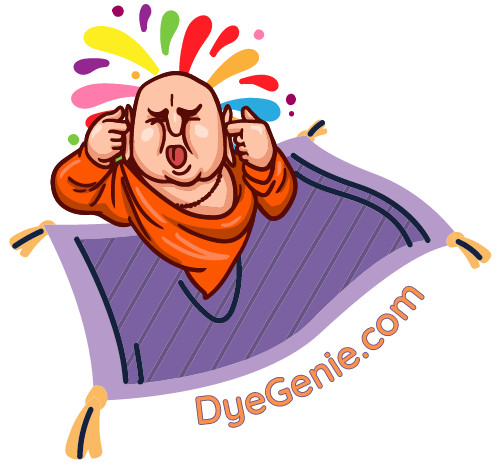When dog urine dries in carpet fibers, it becomes more than just a stain — it’s a chemical problem. Dried urine leaves behind alkaline salts and ammonia crystals that reactivate every time humidity rises, releasing that unmistakable odor. As professionals who specialize in carpet dyeing and restoration, we’ve seen how untreated urine can permanently damage carpet fibers and even alter color.
Below is a step-by-step professional guide to effectively remove dried dog urine — and restore both your carpet’s appearance and your home’s air quality.
Step 1: Locate Every Affected Area
Even if the stain looks small, urine often spreads under the carpet pad.
To find all the affected spots:
-
Use a black light flashlight in a dark room — urine glows yellow-green.
-
Or simply rely on your sense of smell.
-
Mark each spot with masking tape for treatment.
Tip: If your carpet still smells even after cleaning, you likely missed a section beneath the surface.
Step 2: Rehydrate and Neutralize the Salts
Dried urine is no longer wet, but the salts remain. To remove them, you need to reactivate and neutralize:
-
Mix warm water with a few drops of mild dish soap (never use bleach).
-
Lightly mist the area — don’t soak it.
-
Gently blot with a clean towel.
Avoid over-scrubbing; that can spread the stain or fray carpet fibers.
Step 3: Apply a Professional Enzymatic Cleaner
Household cleaners often mask odors temporarily. What truly breaks down urine odor is an enzymatic solution — a product that digests the organic compounds in urine.
At DyeGenie, we recommend using a professional-grade pet stain and odor remover — the same formula our technicians use in the field. It doesn’t just cover up the smell; it neutralizes the source at a molecular level, preventing future odor reactivation.
(This is where we’ll link or mention your resell product once your offer page is ready.)
Apply liberally, let it dwell 15–30 minutes, then blot thoroughly.
Step 4: Rinse and Extract
If you own a wet/dry vacuum or carpet extractor:
-
Rinse the treated area with clean water.
-
Extract the moisture thoroughly.
-
Allow the area to dry completely — use fans or open windows for airflow.
If you don’t have extraction equipment, blot as much moisture as possible with absorbent towels.
Step 5: Address Residual Discoloration
Sometimes urine causes permanent yellowing or bleaching, especially on wool or nylon carpets. If you notice color loss after cleaning, this isn’t dirt — it’s chemical damage.
This is where professional carpet dyeing restores what cleaning can’t fix. At DyeGenie, we can re-dye affected areas, perfectly matching the original color for seamless results.
Step 6: Prevent Future Accidents
After cleaning, apply a pet deterrent spray or cover the area temporarily. Dogs often return to previously soiled spots, especially if they can still detect residual odor molecules.
Also, ensure pets have consistent access to the outdoors — and rule out any medical causes if accidents continue.
When to Call a Professional
If the odor persists after cleaning, the urine may have soaked into the padding or subfloor. In that case, professional treatment or replacement of the pad may be required. DyeGenie offers advanced stain correction, odor neutralization, and re-dyeing solutions for severe damage.
✅ Professional Tip:
Dried urine left untreated can permanently alter carpet dye structure within 24–48 hours. The sooner you act — and the right product you use — the better your results.
